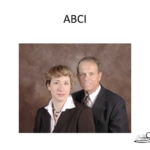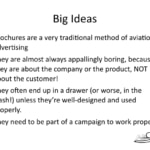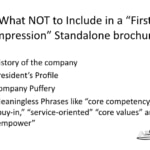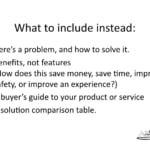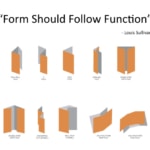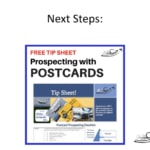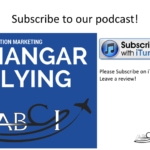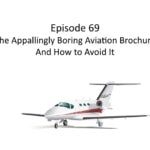Most aviation marketing brochures are appallingly boring.
Don’t spend valuable advertising budget printing glossy brochures that don’t have a chance of connecting or inspiring customers!
Big ideas from this week’s episode:
- Brochures are a very traditional method of aviation advertising
- They are almost always appallingly boring, because these aviation brochures are about the company or the product, NOT about the customer and his problems!
- They often end up in a drawer (or worse, in the trash!) unless they’re well-designed and used properly as part of a well-thought-out marketing campaign or sales process.
Download the Postcard Checklist mentioned in this episodes to make your postcards MUCH more effective.
Transcript – Episode 69 – Appallingly Boring Aviation Brochures And How to Avoid Them!
[MUSIC]
Need some help with your brochures? We’ll professionally design them, write the contents, & print them for you!
Announcer: You’re listening to aviation marketing Hangar Flying, the community for the best sales and marketing professionals, in the Aviation Industry. You can’t learn to fly just from a book. You’ll learn from other pilots who know the tools, the skills, and the territory. Your hosts John and Paula Williams, are your sales and marketing test pilots.
They take the risks for you and share strategies, relevant examples, hacks, and how-tos. Be sure to subscribe on iTunes, so you won’t miss a thing.
Paula Williams: Welcome to aviation marketing Hangar Flying episode number 69, the appallingly boring Aviation Brochure and how to avoid It.
John Williams: [LAUGH]
Paula Williams: Or what to do instead right?
John Williams: Yeah, whatever.
Paula Williams: [LAUGH] I’m Paula Williams.
John Williams: I’m John Williams.
Paula Williams: And we are ABCI, and ABCI’s mission is.
John Williams: To help all you folks out there sell more products and services, in the aviation world.
Paula Williams: And you’re not going to do that with appalling brochures, right?
[LAUGH]John Williams: No.
Paula Williams: So we’re here to help you fix that. If you have any questions, comments, or anything else about this episode or anything else, please do comment on our blog. It’s AviationBusinessConsultants.com or on social media, you can use the #AdGeekMarketing, and we will do our best to find and respond to your comment.
So, we do our best to reply every time because we really appreciate you guys participating and letting us know what you’ve tried, what you haven’t tried, what you think will work, what you don’t think will work, what you agree with, what you disagree with, and so on, right?
John Williams: Absolutely.
Paula Williams: Okay, so the big ideas today. Brochures are a very traditional method of aviation advertising, right?
John Williams: Yeah they are.
Paula Williams: And they are almost always appallingly boring. Because they are not only about. Or they’re not about the company or the product, not about the customer.
So if you go through NBAA or any of the other aviation trade shows, and you go to ten booths and pick up ten different brochures. They’re basically going to have great graphic design, a company profile, a message from the president, we’ve been in business for 30 something years, and all of that stuff that cares about right?
John Williams: Yeah I mean you’re in the NBAA convention or wherever because, you want information on a product, you don’t care about the company so much.
Paula Williams: Exactly, they don’t care who you are, until they care how you can solve their problems to start with.
John Williams: Exactly.
Paula Williams: And these brochures often end up in a drawer or worse, in the trash, unless they are well-designed and used properly.
Now.
John Williams: And used properly by whom? Now wait a minute. If I pick one up, how do you know how I am going to use it?
Paula Williams: You are the customer. You can use it any way you want.
John Williams: So you don’t care about me using it properly.
Paula Williams: No.
John Williams: [LAUGH]
Paula Williams: I care about the person who commissioned that said brochure using it properly in fact, let me tell you a story.
John Williams: I’m sure this one is going to be good.
Paula Williams: [LAUGH] There is someone that I talked to about marketing. We do consultations for people that are having marketing problems.
And this person’s scheduled half an hour, and of course one of the questions they ask him is, how are you marketing now? And he said, well, I have a stack of brochures on a table in a nearby FBO. And I said, well, what else are you doing? And he said, nothing.
John Williams: He’s not marketing?
Paula Williams: And I said, okay, well how many of these brochures are even disappearing, if you check these on a regular basis? None, they’ve been sitting on this table in this brochure rack for years. Nobody has ever picked one up, he’s never gotten a customer from it and he calls this marketing.
So, just setting them out there is not an appropriate use of a brochure.
John Williams: By putting a billboard on a dirt road that nobody drives on. [LAUGH]
Paula Williams: Exactly.
John Williams: But a really nice picture.
Paula Williams: Now, billboards can be really effective. They can be great sales tools, they can be a lot of different things, but they need to be part of a campaign.
John Williams: Yes.
Paula Williams: In order to work properly. They can’t just be a.
Paula Williams: Random act of marketing, right?
John Williams: Uh-huh.
Paula Williams: Right, okay. So.
John Williams: Particularly stuck where nobody cares.
Paula Williams: Exactly. So every brochure has to fit somewhere in your marketing system. So, what is the purpose of this brochure and if we talked to this guy that I just mentioned.
I will tell you he’s in the finance/insurance kind of services business. I don’t want to tell you any more than that, because I don’t want to embarrass anybody. But-
John Williams: He hears this he’s going to be embarrassed anyway.
Paula Williams: I’m sorry, I feel bad.
John Williams: [LAUGH]
Paula Williams: I do.
John Williams: Yeah.
Paula Williams: But, I really want to prevent other people from doing the same thing and relying on something, that just has no chance of working, right?
John Williams: Yeah, that’s-
Paula Williams: So he was using brochures for advertising and prospecting. But he was using them improperly. There are ways to use them well.
You can use them in phase two. Building credibility and closing sales. And this might be a good place for that company information brochure, as part of an information package. But it sure as heck shouldn’t be a stand alone, this is the first impression you get of the company, right?
John Williams: Right.
Paula Williams: And then in phase three for referrals, resales, and recaptures, you have a new product or something like that. Great place to use a brochure. To send that out to your existing customers. Let them know, do you know we also do, this. Right?
John Williams: Mm-hm.
Paula Williams: Especially to people who already know, like and trust your company.
They would rather buy more things from fewer people just to make their lives simpler. Right?
John Williams: Yep, absolutely.
Paula Williams: Okay. So let’s start off with what not to include, in a first impression stand alone prospecting type brochure. Right?
Paula Williams: Things to not include, a history of the company.
John Williams: You’re wasting space.
Paula Williams: You’re wasting space and nobody cares until they know what product you have that they want, or what problem they have that you solve. They don’t care about the history of your company.
John Williams: Or the President’s profile.
Paula Williams: Exactly, president’s profile that’s another one, that’s just strikes me as kind of inappropriately narcissistic.
John Williams: [LAUGH]
Paula Williams: Can I say that?
John Williams: That’s a $64 word. [LAUGH]
Paula Williams: Well, I mean they do have the nice little profile picture with the president of the company. With a nice statement that usually includes company properly like, we have all these core competencies and we are service oriented.
And our core values are very important to us.
John Williams: [CROSSTALK] We empower our employees.
Paula Williams: Exactly. [LAUGH]
John Williams: Right.
Paula Williams: So, you don’t want to have any of that, in a first impression stand alone prospecting type brochure. Okay?
John Williams: Yep.
Paula Williams: With me so far? And now you’re saying, okay, well now my brochure’s blank [LAUGH] .
John Williams: Well if it is, then you need to follow along here a little bit.
Paula Williams: Right. So here’s what to include instead. A great reason to use a brochure is to say, here’s a problem and here’s how to solve it. So the brochure shouldn’t be about your company, and it shouldn’t even be necessarily about your product, it should be about a problem that the customer has, and they see a great headline on there saying, are cold starts causing your fleet to have delays?
Or are you suffering from problems with scheduling maintenance? Or unexpected situations in your fleet? Or what problems are you having that your product or service can solve? You know what that is, because you know what people complain about, right?
John Williams: Mm-hm
Paula Williams: Okay. Here’s the problem, and here’s how to solve it.
You also want to use benefits rather than features. Right?
John Williams: Yeah, you don’t care about the features if it doesn’t work for you.
Paula Williams: Right. And when I say benefits, things that are benefits would be, and people will often say, well we have the, ours can do this in six seconds as suppose to ten seconds which is what our competitors do.
Well, why do we care? How does this save you money, how does it save you actual time in terms of the customer’s process, in terms of dispatching an aircraft, or loading their customer’s stuff or, in the terms of the flight school, how can you improve the students experience?
Or in the case of a component or something like that, how can you improve safety in a fleet? Lots of different examples of how this could be a feature, that leads to a benefit. And you want to talk about benefits, not features. Cuz they don’t care and they may not know, why is that important?
John Williams: Yeah, the few technical nerds may care about the features or specs but in general, you’re selling to somebody that’s got money in the company, that wants benefit out of doing some thing. They don’t care about the specifics.
Paula Williams: Right, and it’s really interesting. Because a lot of our customers are engineers.
Or at least have that engineering mindset. They’re inventors, they are very scientifically minded people, which is wonderful. We love working with those kind of folks. But one of the things that have to kinda nudge them to do sometimes, is to back up a step and assume that the customer doesn’t know as much as you do.
John Williams: I do that to you.
Paula Williams: Yes you do.
John Williams: [LAUGH]
Paula Williams: I get into marketing nerdology.
John Williams: [LAUGH]
Paula Williams: And you make me back up and say you know what? They don’t know what are the cost per lead is. [LAUGH] And it’s perfectly reasonable because, that’s not your main business.
You want to sell more stuff, but you may not know or care about all of the marketing math and garbage that is in my head, right?
John Williams: Mm-hm.
Paula Williams: Same thing. All of that stuff that is in your head is fantastic stuff, but you don’t have to put it all in the brochure.
John Williams: And nor should you try.
Paula Williams: Nor should you try. This is not a place to prove how smart you are [LAUGH]. Another thing that you could include is maybe like, a buyer’s guide or a short buyer’s guide to your product or service. Here are some of the things that you want to consider when you’re shopping for a Auxiliary power unit, here’s some features that you may not know, or some benefits that you may not know you could get from an APU.
Lots of things that you can do that are kinda cool. A solution comparison table, those are really cool and customers really love those. Because here are five ways of solving your problem, and here are the pros and cons of each of those five ways of solving your problem.
And this has to be somewhat objective. Of course you want to make your product look good, that’s why we’re marketing.
John Williams: Sure, and you can slant it a little towards your product. And it would be silly not to. But you can’t go overboard.
Paula Williams: Yeah. All the data has to be accurate.
We’re talking about actual facts, not alternative facts, right?
John Williams: [LAUGH] Yeah.
Paula Williams: [LAUGH] Okay, we’re having a little fun. But seriously, it does have to be somewhat, it has to be credible information that people will actually believe. And you want to make that formatted in a way that is easy to read.
I have never seen anybody pick up a brochure and read it cover to cover. In my entire experience of walking around at trade shows, I have never seen that happen.
John Williams: No, you’ll buy a stand, find what you want and you’re done.
Paula Williams: Yeah, and then it either goes in the trash or it goes in the shirt pocket.
You want to end up in the shirt pocket.
John Williams: Yup.
Paula Williams: Okay, so that being said, forms should follow function. There are lots and lots of ways of doing brochures, and whether you’re sending it in the mail, or whether you’re handing it to someone at an event. There’s lots of different ways of doing this, I’m kind of a fan of the shirt pocket test.
John Williams: So all these pictures for those of you that are looking at it, are these the only possible?
Paula Williams: No.
John Williams: Okay [LAUGH].
Paula Williams: Okay, yeah. And what you’re looking at, if you’re seeing this on your screen, there are ten, count them ten different ways of folding a sheet of paper into a brochure.
John Williams: [LAUGH]
Paula Williams: One is a tri-fold, it’s just the usual thing that people see, probably the most common. There’s a z-fold, which is tri-fold that’s just folded a little bit differently. There’s a half-fold, which is where you take a piece of paper and fold it in half. And those are great for, if you have a larger envelope or something like that where you’re going to mail it.
John Williams: But the thing is, [LAUGH] depending on how you want to fold it, is to how you need to print it [LAUGH].
Paula Williams: True, and then things like a parallel fold. That would be for something with legal paper, where you have a little bit more space. So it’s kind of like a z-fold, except with one extra panel on it.
All of these things really depend on what you want to convey. So if you’ve got big pictures, or big maps, or something like that, you don’t want to do something really complicated like a parallel fold, right? [CROSSTALK] That would be for little, teeny, tiny columns of text. And things like that.
So form really should follow the function of what are you trying to communicate, and how are you going to send this, and how is your customer going to carry it around with them. And is your customer actually going to use this. So, there’s gate folds, there’s concertina folds, there are roll folds with four-panels, there’s a half and half fold for two sheets of paper.
And there’s a half and roll for two sheets of paper. So there’s lots of variations here, and we’ve got a neat little diagram, if you can see it. It’s really kinda hard to describe, other then, you just really want to think this through. And talk to your printer too.
Printers are really good at giving you ideas. If you have this information to convey, this is really not good for folding in the middle of a picture or whatever.
John Williams: And on top of that, use what you’ve seen, folders that other folks, including your competitors, have used, and that’ll give you an idea of how you want or not want to do it.
Paula Williams: Exactly. You saw one this morning actually, that you really liked.
Paula Williams: That was from NBAA and it was a.
John Williams: Yeah. Well that wasn’t necessarily the fold, but it was the quality of materials they used.
Paula Williams: Yeah, that was actually a gate-folded postcard. Kinda cool, very glossy heavy, beautiful paper, and really beautiful printing.
And we happen to be marketing nerds, so we nerd out on that kinda thing. But yeah, the quality of the printing, I would do fewer higher quality brochures, spend all your money on quality, not quantity. Right?
John Williams: Absolutely.
Paula Williams: Okay. So yeah, if you’re putting it through the mail, then you’re going to have some different considerations of where you can print and where you can’t.
We’re not going to get into that today. But the USPS website has some really good guides and other things, that tell you [LAUGH] not to print in places they’re going to run it through the machine, and put a goofy little bar code right?
John Williams: Right.
Paula Williams: Okay. So think about it, form should follow function and that’s all we’re going to say about that.
But we are going to talk about ways to advertise with brochures. Cool? So phase one, prospecting. At a trade show, probably the most traditional way of advertising with brochures. I’m going to put a caveat here and say I much prefer to send a customer, just give them a business card at the trade show, and then send them an information package later.
John Williams: Add those two things.
John Williams: First is, you get their business card and then, in order to send them something, you get your contact information.
Paula Williams: Right. And it gives you a reason to contact them again later, and it also makes sure that that brochure gets to their office.
Because if you’re asking them to carry it around for two days, and then put it in their luggage and ship it home. Chances are it’ll end up either in the hotel garbage can, or in the convention center garbage can.
John Williams: Yeah, even if they wanted to keep it, cuz I know I can remember reading stuff in the hotel and not making it back to the office.
Paula Williams: Exactly, and then go and where was that thing [LAUGH]. Even if you wanted it later, you wouldn’t have it. As part of an information package. This is my favorite way is you send it after the fact, after you’ve met somebody or had a phone conversation, or whatever.
Then you send them, ideally, a really complete fabulous package with not only brochures, but product sheets and a handwritten letter. And maybe some CDs, and demos, and other cool things. Because this is your opportunity, you want to make the most of it, and you really want to impress somebody with a package that they get in the mail, right?
John Williams: Yes.
Paula Williams: As collateral in the sales process. So you’re having a conversation with someone and you say, you know what? We’ve got a brochure that compares these five different solutions to your problem. I’d be happy to send that to you. Let’s schedule another time to go over it after you’ve reviewed it.
So that becomes a part of your sales process. You’re not just leaving it on the table. You’re actually interacting with the documents with your customer, right?
John Williams: Yup.
Paula Williams: Okay.
John Williams: And most businesses where you leave them on a table, come night time, they’re going to throw them away anyway [LAUGH] .
Paula Williams: [LAUGH] That’s true. [LAUGH] Or they’ll sit there for years and not do anything, like that.
John Williams: [CROSSTALK] Yeah.
Paula Williams: Okay, number four, to build credibility. So you’ve got somebody in your sales process, you’ve talked to them once or twice. And you want to add a little bit more information.
This is part of what we call a drip campaign, where you send little bits of information over time, to make sure that you’re keeping in contact with them, throughout the length of time that it takes for them to make the decision, or to get the funding, or to do whatever.
It reminds you that you’re there, reminds them that you’re there.
John Williams: And its credibility relies on the fact, that these brochures are very high quality and very well put together.
Paula Williams: Exactly, because the quality of the printing and all that stuff, is a reflection of your attention to detail.
Yeah, and everything else. To add new information. So you have an update in your product or service, you can send out a brochure to people who are in your pipeline and let them know. Right?
John Williams: Mm-hm.
Paula Williams: After the sale, you can use brochures as part of a new customer information package.
Here’s how you use your new funky new toy. [LAUGH] Here’s some things that you may not know. Did you know that it also does this, or that you can use it in this way? And so on. So, as part of your new customer information package, you could also have a brochure that talks about your referral program, that talks about your guarantee, that talks about your customer service, lots of things after the sale.
As an update or an announcement of a new product or service to your existing customers. So, the worst thing in the world is to have a long time customer, tell you about something that they bought from one of your competitors, because they didn’t know that you also did.
Websites, as an example. [LAUGH] We’ve been doing aviation brochures with a customer for a number of years, and he went to somebody else to do his website. That’s just made me insane.
John Williams: Yeah, exactly. But that was our fault.
Paula Williams: That was our fault. It’s our job to let them know.
What else we do, besides what we’re already doing for them. So once again, three elements of a successful campaigns for marketing in aviation industry. And when you are thinking about designing your brochure, you want to think about this as well. What is the list? Who do you want to send this too, or give this too?
What is the offer? What purpose do you have in giving people this brochure? What do you want them to do as a result of having read through it? And third, the presentation, which is all of the things that we talked about. Should it be a bi-fold, a tri-fold, or a gate-fold?
Or glossy, shiny, fabulous whatever, or should you be able to write on it, have a worksheet in there, whatever you want it to do. So, form following function, right?
John Williams: Precisely.
Paula Williams: Cool. So we talked about, list the offer and the presentation, and we talked about seven things to do with brochures, right?
John Williams: Yes, we did.
Paula Williams: [LAUGH]
John Williams: Don’t you dare test me on this. [LAUGH]
Paula Williams: [LAUGH] And now, the big point, is to never ever, ever do an appallingly boring brochure.
John Williams: Exactly.
Paula Williams: So if that’s all you learned today that’s good enough. [LAUGH] So we do have a tip sheet on prospecting with aviation postcards, and it does talk about the list, the offer, and the presentation.
And the things that are in that tip sheet are also very helpful for aviation brochures. So, I highly recommend that for really any piece of direct mail that you’re putting together. It’s really good information regardless of the form that it takes. But, so download that and go sell more stuff.
John Williams: Yeah, America needs the business more than ever.
Paula Williams: Absolutely and subscribe to Podcast, on iTunes, Stitch, or Google Play and please do leave a rating.
John Williams: And that was a quote by Zig Ziglar by the way.
Paula Williams: Yes it was. [LAUGH]
John Williams: See you guys next time.
Paula Williams: [LAUGH] Thanks for joining us.
John Williams: Bye.[SOUND]
Announcer: Thanks for joining us for aviation marketing Hangar Flying, the best place to learn what really works in sales and marketing in the Aviation Industry. Remember to subscribe on iTunes and leave a rating.
[MUSIC]
// <![CDATA[
..
// ]]>
Podcast: Play in new window | Download
Subscribe: Spotify | Amazon Music | RSS

